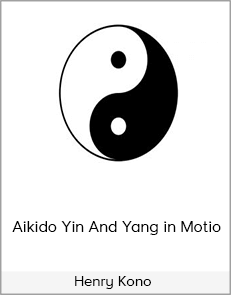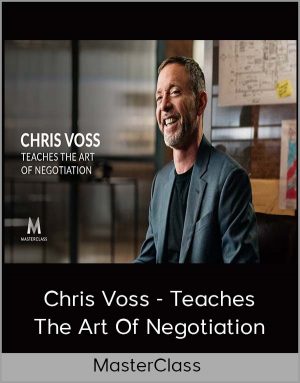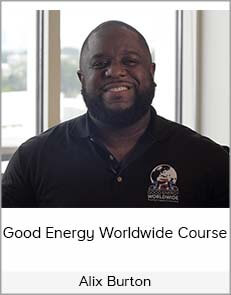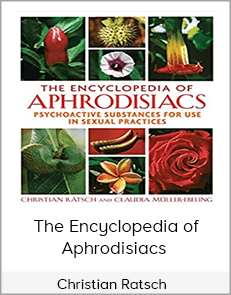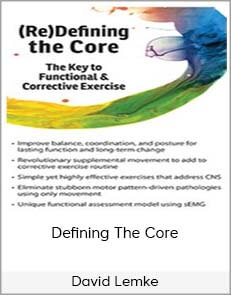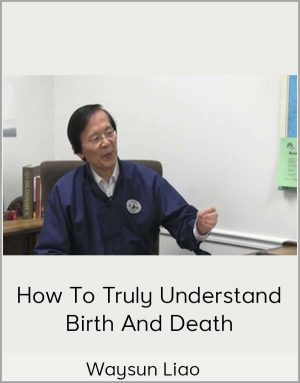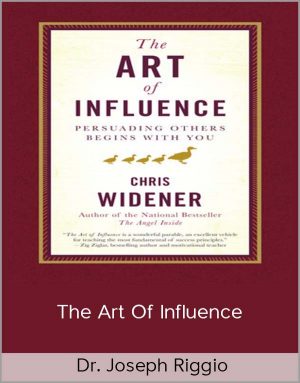Henry Kono – Aikido Yin and Yang in Motio
$30.00
In stock
These men always took their secrets with them to the grave and O Sensei was no different.
Henry Kono – Aikido Yin And Yang in Motio
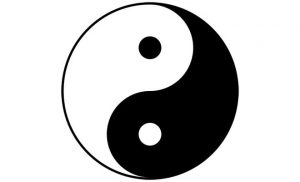
Check it out: Henry Kono – Aikido Yin and Yang in Motio
f I had started learning Aikido in my own country and had kept on practicing like that for 40 years, none of what I am about to say would have come about. It is only because I could observe O Sensei from 1964 to 1968 that I realized these things. Of course, due to his old age, O Sensei did not teach on a regular basis. He spent most of his time in his little office at the Aikikai Hombu Dojo and would come every now and then for ten to fifteen minutes to show a few movements for before returning in his room. Overall, I probably saw him practice between 250 and 300 times and it is precisely during these moments that I was getting this sensation that we were not doing what he was doing. We were trying our best to reproduce what we saw him doing but with very little success. Besides, it is one thing that we could not reproduce what he showed but he, himself, constantly refused to explain us what we were not getting. If you did not get it, he would simply do the technique again and say “look carefully!” but never would he give any explanation. As surprising as it sounds, this was actually very typical of O Sensei’s way of teaching and to a larger extend, it was common to all the great Japanese masters of Budo. These men always took their secrets with them to the grave and O Sensei was no different.
I remember an interview of Gozo Shioda Sensei that he gave in England a few years ago where he explained that during the 10 years he stayed with O Sensei; never did he receive any explanation from the master about what he was doing. Therefore, Shioda had to patiently interpret everything by himself without any other form of instruction than watching his master demonstrate. While I was at Hombu, O Sensei used to very often say “Of course I am not going to tell you what I am doing; it is up to you to understand it”. It is obvious that the enormous differences between what the different students of O Sensei are showing is the direct result of Ueshiba’s approach to teaching. It is in these conditions that I realized that if I really wanted to understand what Ueshiba Sensei was doing, I had to focus on the content rather than the form. I started to try guessing what this old man had in his head while he was doing his Aikido. Very early during my stay in Hombu it appeared to me that O Sensei must have been basing all this on something simple, a principle as universal as Aikido itself. I practice patiently and diligently, waiting for him to unravel something, let go of a clue hidden within his mystical speeches. Once again, it was useless trying to ask him to explain what he was doing so I just waited and paid attention. Well, to be honest, I did also bring myself to attempt a more subtle approach… One day that we were having a party for celebrating his birthday, I quietly asked O Sensei “O Sensei, how come we can’t do what you are doing?” and he just replied “Because I know Yin and Yang and you don’t”. I spent the next 40 years of my life trying to figure out what the Yin and Yang was. In fact, it is really after one month of reflection and meditation that everything came clear to me. I suddenly discovered a model where all the techniques I had learned in Hombu integrated themselves. How to follow the principles of Yin and Yang in Aikido? This is precisely what I will try to explain to you in this article. One thing must be clear before we start; I am forcing no one, not even my own students, to do it like this, nor do I say that it is the only way to do it. I am just proposing another way to perform the techniques that you all know, a way that corresponds more to how the founder was performing them. I am eighty years old, I am well past the style quarrels and I just want to pass on what I have understood to whoever wishes to learn.
Yin and Yang is the sum of two equal polarities that are always found in pair. The combination of these two notions illustrates the harmony that lies within duality: the couples up/down, front/behind etc. To apply this principle in Aikido is to search for harmony between the two parts of the ensemble uke/tori. The only way to reach this harmony is to find the balance in reference to the center.
What came out from my study of the Yin and Yang in Aikido is that there are two possible approaches that can be undertaken relative to the “center”. I will try to define them both but first, we must agree on what we call the center. When I am on my own, my center is located just a few centimeters above my belly button. This is the concept of Hara well known of all the Aikidoka and Budoka alike. We should not have too much problems agreeing on that point. However, everything becomes more complicated when a partner comes into play. It is here that the fundamental differences between the two approaches can be found.
One of these approaches consists of working on, unbalancing or taking someone else’s center whilst using our own center if possible (Figure 1). Let us call it the “egocentric” approach: I take his center; he and I are very distinct entities, even at the moment of our interaction. This might remind you of something since Man, as a self-conscious animal, naturally performs all of his tasks from that perspective.
The other approach relies on the will to preserve harmony, whether we are alone, or in contact with someone. It is all about making one with the opponent. If it is so, we therefore share the same center because we are one. This center is no more mine than his, it is ours and it will remain as such for as long as our interaction occurs. Many examples are to be found in nature. In physics, for example, the center of gravity of a solid is defined by “the point of application of the result of all gravitational forces at all points of the solid”. To be clear, it is where the sum of all forces is nil, it is equilibrium, harmony. Another example can be found in geometry. If you take for example a triangle, its center of gravity is quite obvious, somewhere within itself. However, if you join two triangles together by one of their side, their respective centers of gravity disappear to the profit of the single center of gravity of the resulting quadrangle. From two centers we end up with only one, which is the famous 1+1=1.
During the time I spent observing O Sensei, I often wondered where he was focusing his attention. As many others, I was convinced that his attention was fixed on the center. The confusion lies in the fact that he did not focus on either his or the other person’s center but on their common center (Figure 2). Thinking about it now, he kept on saying it but nobody got it “between him and I, there is a 10 [Jyu in Japanese, which is represented by a Kanji in the shape of a cross]”. As if it was not enough, he also used to say “when uke comes to attack, he doesn’t exist, Ueshiba doesn’t exist”. He used to say that while storming into the Dojo because we did not do what he was showing. In this latest quote, nobody really disappear obviously but both become one, Ueshiba and his attacker do not exist anymore as separate entities but as a single product of there interaction: this is unity within motion. There is no Yin without Yang and no Yang in the absence of Yin.
The problem is now easily exposed and understood; the concept illustrated in Figure 1 is the one we must get away from but what makes it all so difficult to actually do it? It comes from the trick that nature played us by providing us with a consciousness that allow us to distinguish what is us from what is not us. We naturally feel secure in our center, comfortable in our own space and we perform all of our actions from that point of view. We are by nature trapped into the model 1 because of our conscience, our ego and our life experience. It is precisely here that all the Dojo work based on tireless repetition, we can manage to break free from these reflexes, whether they are natural or conditioned upon us by our education. It seems relatively simple to understand but it becomes incredibly difficult to actually, in practice, preserve this common center. Because this center is common, we cannot feel it and the presence of the other person leads us to forget it. In spite of what our instinct tells us, we must force ourselves to see ourselves and the opponent as two sides of a same coin, A=B and B=A.
There is yet another difficulty that arises when we try to practice this. You cannot discern the center through touch since touch always makes out the difference between what is me and what is him. In order to understand the concept of Yin and Yang, one has to go beyond sensory perception towards something simpler and more evident. This relates in a way to the obligatory simplicity of an efficient martial response. During an aggression, the physiological and emotional conditions are such that motility, coordination and capacity of analysis, amongst other things are greatly reduced. This is what many call the “adrenalin kick”. Many great martial arts masters say about techniques that are applicable “in the street” or in a “survival situation” that they must be simple and have to be based on very simple principle too. Such techniques do not require complex nervous influx, a minimum of memory resources (some advocates of the triunic brain might call it switching to reptilian brain) and limited physical coordination. Besides the sheer speed of execution, we must completely adhere to the matrix 2 to resist the temptation of our spirit, guided by fear from the unknown or what is the other, to switch back to matrix 1, the natural one that was hard wired into our brains subsequently to millenniums of Darwinian evolution. This matrix 1 is a mode where feelings and emotional state are prominent. Based on matrix 2, Aikido is therefore not an art of feeling but an art of knowing. Robert Nadeau told me once that O Sensei confessed to him that if he managed to understand the secret of Aikido, he could accomplish all the very same incredible techniques that O Sensei performed himself in just three months. The consequence of this is that I am convinced that we are actually trying too hard, working too seriously and that it is the very reason for our failure to grasp the concept. We become prisoners of the knowing how to instead of just trying to simply know. It is often important to take a step back in order to consider things under a new light, from a new angle which is all I am proposing you to do rather than repeating over and over again all those techniques that you all know so well already.
If we really want to understand what the Yin and Yang symbol means, we must understand clearly how these two energies are manifested and how they work together. They are both active energies that are in states of compression and expansion. They are in motion in order to equilibrate each other at all time. If we aim at using this principle in Aikido, we must understand the following: Yang energy (red line) comes from outside and goes towards the center. Yin (green line) energy starts from the center and is directed towards space (Figure 3). The main point here is to accept that Yin and Yang are not into direct contact with each other but are both linked through the center. Keeping that in mind when we observe the Yin and Yang symbol (Figure 4), we have to fight against seeing them touching each other but instead, assume that they are both linked through the center (green line). They act like one from the center in order to equilibrate each other.
I see great importance in not having stances or fixed postures in Aikido in order to be able to balance at all time these forces applied by uke on tori. O Sensei never spoke of posture because by definition, a posture is immobile; it limits the natural flow as well as the capacity to adapt oneself to what uke is proposing.
It is capital to keep in mind that if one of the energies is directed towards the center, the other moves away from it. The aim is to consider this as evidence so that our senses do not make us forget it, whatever happens on the mat. Once this is accepted, whenever the other side seems to touch us or that we are touching the other side, we must consider that we are only touching the center, never mind what our sense tell us. Once again, it is about knowing, not feeling; not to give in to the sensation that the other is touching us.
When our senses tell us that our partner touches us, it has the psychological consequence to make us perform body motions that are the opposite of uke’s. From there, the motion will be performed from the “egocentric” center (fig. 1); this is what our conscious spirit dictates to us. This is such a subtle change that we don’t even notice that we are moving away from the concept illustrated in Figure 2. In fact, this is such an automatism that our mind creates clues that lead us to think that there is no other solution than this one to reach an adapted solution to the situation in front of us.
Henry Kono remembering O Sensei
At the beginning of our study, it is always easier to make the attack less “personal”, less human by taking for example the image of a train heading towards us. It helps us to free ourselves from the psychological tension provoked by an attack: “Why me? What does he wants? What have I done?” That way, we are only left with one fact: we are standing in the train’s way. It also frees us from the intention to act egocentrically on uke (you would not try to “take the center” of a train would you?).
Now I will tell you the real secret of Aikido. The only secret is that we are not trying to find answers to our problems because since the beginning, there is no problem. Therefore, the goal is not to get away from it as all there is, is a flow. All we are really supposed to do is to just move with what happens in front of us, learn not to impede the flow until it stops, and most importantly to preserve the balance between the attacker and us. The roles do not change: uke is Yang, the instigator; and tori is Yin, the receiver. Yin does not say “I’m going to disrupt or destroy Yang” or he would himself become Yang. The technique is therefore solely due to uke’s action, tori is not trying to do anything. This having been clarified, the words of O Sensei once again get a much cleared meaning. He used to say: “Aikido is not about changing the other, it is about changing oneself”. If I move to maintain the balance that exists between me and my partner, I am no longer applying a technique upon him; I am only applying a motion to myself, and this, relative to the center. Just like the Yin and Yang, the reciprocity of our interaction is such that when I move, it indirectly affects my partner through our connection to the center. Without this realization, what we practice is an art which aims at stopping the flow using a bunch of techniques that seem to provide answers to the problem that the other side brings us. In essence, consciously or not, we practice as in Figure 1 and no one realizes that if we practice in this mode, the flow is stopped by the implementation of one of the 200 techniques of our repertoire. We seem to tell ourselves: “He comes with this flow, but I will show him that that one is better. As explained above, if we do that, we both produce a flow, which leans that we are both Yang.
The big difference between performing techniques according to modes 1 or 2 does not lie in the final result. Both ways are effective. It is just easier to practice in mode 2 if you, like me, are 80 years or if you are a petite woman. I do not see how someone much weaker physically could perform the techniques on someone stronger. Furthermore, in mode 1, it is certain that a uke with a supple and healthy body can preserve his safety, but on the other hand, if he lacks such physical attributes, he could sustain significant and unnecessary damage. It is at that moment that we must decide how to behave: do we want to just survive or do we want to destroy the enemy? Both approaches are effective, but only one leads to harmony, that is to say, the preservation of oneself and of the attacker. After forty years of study, I have come to the realization that if we want to move with the flow, there is no other option but to do so in terms of Figure 2. Only this relieves us of our ego and it is the only condition that can discern the flow which occurs in front of us and mingle with it. In order to put ourselves in that mind-set, we need to define and accept a center that is not in us (Figure 2). If we want an image to help us to accept it, we just have to imagine that when someone touches us, we are actually touching the center. After a while, we should be able to see where the center is moving and, by adjusting our position, to become one with the other side.
I think that I pretty much said everything. I do not want to change your practice, but I suggest you just keep what I explained in a corner of your head and maybe one day you will realize what these principles allow you to do.
I must have seen O Sensei practice his magical movements about 300 times and even if we were never explained how he moved, his silent message was clear. He told us to open our heart so we could see how energy moves in nature. By becoming aware of this, we can mimic the movement of nature itself…

